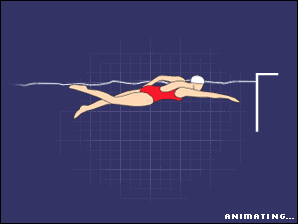Swim Tumble Turn 101. How And Why You Should Do It!
Sulit ba?

Ah, the tumble turn. The bane of many a swimmer’s (and triathletes!) existence. If you’re like me, you’ve probably spent countless laps slamming into the wall, flailing about like a fish out of water (pun very much intended), and generally making a mess of things.
But fear not! There is hope for us yet. It turns out that learning how to do a proper tumble turn can actually be a game-changer in the pool. And if you’re a triathlete, it’s practically a necessity.
Tumble turns can be beneficial for triathletes and triathlon races for a few reasons:
- Efficiency: Tumble turns can help triathletes save time on their laps, which means they can swim more distance in less time. This can be especially helpful in long-distance triathlons, where every second counts.
- Improved performance: Tumble turns can help triathletes maintain a faster pace and swim more efficiently. This can lead to improved performance and faster race times.
- Enhanced technique: Mastering the tumble turn can also help triathletes improve their overall swimming technique and develop better body awareness in the water.
So, what is a tumble turn, you ask? Simply put, it’s a fancy way of flipping around at the wall and pushing off for your next lap. Instead of leisurely touching the wall and turning around, you use the momentum of your flip to propel you forward into your next stroke. It’s like a seamless transition from one lap to the next.
Now, I know what you’re thinking. “But how do I even begin to do this? I can barely flip over in a pool without nearly drowning!”. It takes practice, but with a little bit of perseverance and some solid guidance, you can master the tumble turn in no time.
One way to start is by practicing your flip turns on the edge of the pool. This way, you can get a feel for the motion without having to worry about swimming the length of the pool. Once you’re comfortable flipping over, try incorporating it into your laps. Start by doing a flip turn at one end of the pool, then gradually work your way up to doing them at both ends.
But first things first: make sure you’ve got the right equipment. A good pair of goggles and a swim cap are essential. You’ll also want to find a pool with lanes (preferably one that’s not too crowded), and maybe even a coach or an experienced swimmer to give you some pointers.
Next, it’s time to get in the pool and start practicing. Here’s the basic technique: as you approach the end of the pool, take a deep breath and tuck your head down towards your chest. Then, flip over onto your back and kick off the wall with your feet. As you push off, lift your head up and take a deep breath. Boom! You’re now on your way back down the pool, ready to repeat the process all over again.
‘This all sounds great, but what are the pros and cons of the tumble turn?’ Well, let me break it down for you:
Pros:
- You’ll save time on your laps, which means you can swim more in less time.
- It looks super impressive to all the other swimmers in the pool (and it’s a great way to show off your mad skills).
- It’ll make you feel like a total boss when you nail it.
Cons:
- It can be a little intimidating at first, especially if you’re not used to flipping around in the water.
- There’s a small risk of smacking your head on the wall (but hey, no pain no gain, right?).
- If you mess it up, you might end up doing a belly flop and looking like a total goofball.
Here are some additional information on how to properly perform a tumble turn as a beginner:
- Practice your flip turn first: Before attempting a tumble turn, it can be helpful to practice your flip turn technique. This will help you get comfortable flipping over and kicking off the wall, which is a key component of the tumble turn.
- Start slowly: Don’t feel like you need to rush into the tumble turn. Take your time and build up to it gradually. Start by practicing your flip turn and then gradually adding in the push off and breathing elements of the tumble turn.
- Use the right technique: When performing a tumble turn, it’s important to tuck your head down towards your chest as you flip over. This will help you maintain a streamlined position and make it easier to flip over and push off the wall.
- Take deep breaths: Remember to take a deep breath before flipping over and then exhale as you push off the wall. This will help you maintain good buoyancy and control as you swim.
- Practice, practice, practice: Like anything, the more you practice the tumble turn, the better you’ll get. Don’t be discouraged if it takes a few tries to get the hang of it. With practice, you’ll be flipping and turning like a pro in no time.
So, is learning the tumble turn worth it? In my opinion, absolutely! Not only will it make you look like a pro in the pool, there’s just something satisfying about executing a perfect flip turn. On the other hand, if you’re just swimming for fun and don’t care about shaving a few seconds off your lap times, then by all means, take your sweet time at the wall.
It’s important to note that while tumble turns can be a useful skill for triathletes to have, they may not be necessary for all triathlons. In some shorter distance races, it may be more efficient to simply touch the wall and turn around rather than attempting a tumble turn. Ultimately, it’s up to the individual triathlete to decide where to incorporate tumble turns into their race strategy.
The tumble turn may seem intimidating at first, but with a little bit of practice, you too can join the ranks of the flip-turn elite. Just remember to keep your chin up (literally) and never give up!










